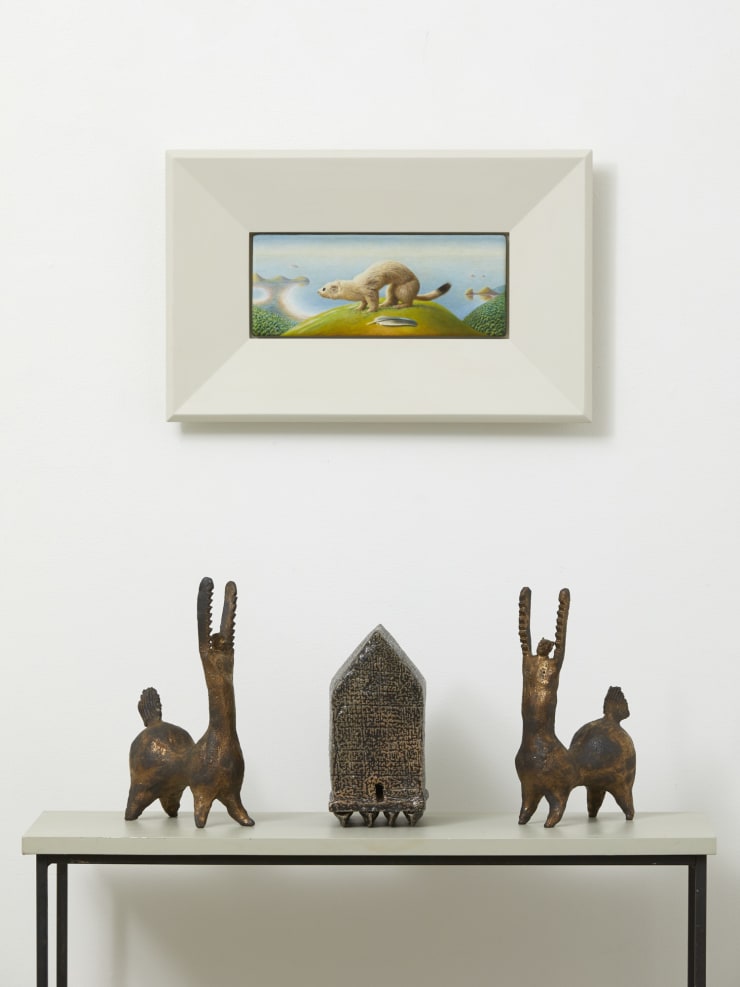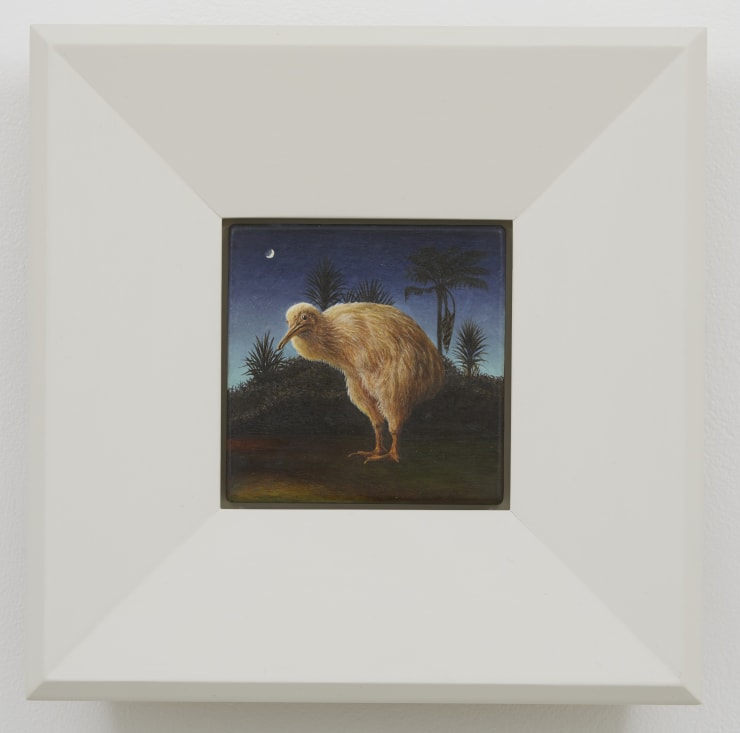Bronwynne Cornish + Hamish Foote: Psalm
Cornish and Foote are playing off the same song sheet, on very different instruments.
Hamish Foote has become fascinated by a gene process, known as leucism, where a recessive gene in both parents can throw up a completely white offspring - this is not to be confused with albinism. As the gene pool shrinks leucism increases. His research into this has led to his jewel-like works, painted in egg tempera on gessoed kauri panels. White kiwis take front of stage, both by night and by day and behind them mystical bays and headlands and moonlight landscapes drawing us further into the pictures. Similarly, the ermine rests triumphant on a grassy knoll, regal, alert, cruel - listening for the rustle of prey. Long associated with royal ceremonial garments, he is both the hunter, and the hunted. Above our heads, glinting in the sky, a flight of the last fairy terns, draw our gaze up, as does the black petrel, both beleaguered by predators, on land and sea.
Bronwynne Cornish on the other hand, presents a group of harpies and Pacific sphinx, each one fiercely guarding a seed, and an egg, warning us to tread lightly on a planet already showing signs of stress and loss, both of habitat and diversity. The satyrs with arms upraised, guard a seed house with a tiny entrance, an egg in a vase, the last of its kind, acts as a momento mori. The graceful headless figure of Echo, warns us of hollow words, that reverberate around our forests and shorelines, and lives. Twice as many plants have been driven to extinction in the past 250 years, then all the birds, mammals, and amphibians combined. Five hundred and seventy-one species have disappeared in the wilds since the middle of the eighteenth century, says Rafaël Govaerts, a Kew Garden botanist, in the journal Nature, Ecology, and Evolution.
In both their painting and sculptures, Foote and Cornish seek to engage us in their very real concerns for the shrinking gene pools and habitats of birds and plants. If these continue to decline at the current rates, large rents in the fabric of our biosphere will appear. How long can the tapestry of our natural world, of which we are a part, survive before it becomes totally threadbare, and our own lives irrevocably diminished? These are the questions Foote and Cornish pose, each in their own unique way.
Hamish would like to acknowledge the support of Unitec Institute of Technology and the Auckland War Memorial Museum. Special thanks to Matt Rayner, Curator of Land Vertebrates, for his input and access to the museum collection.









